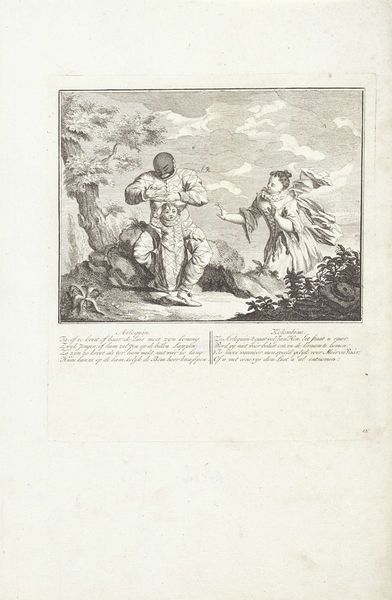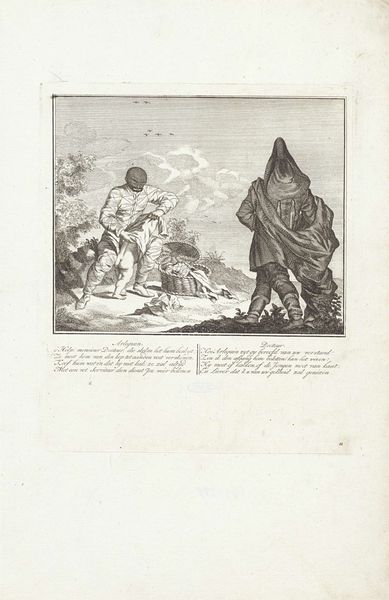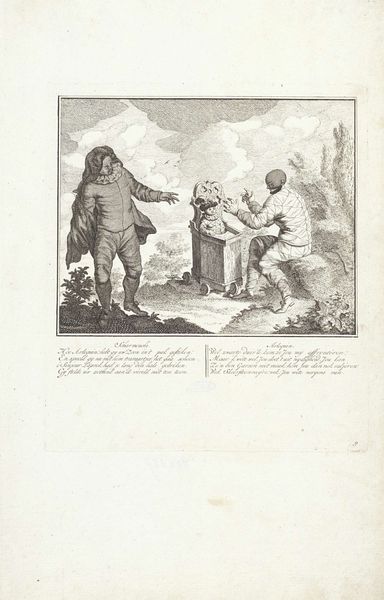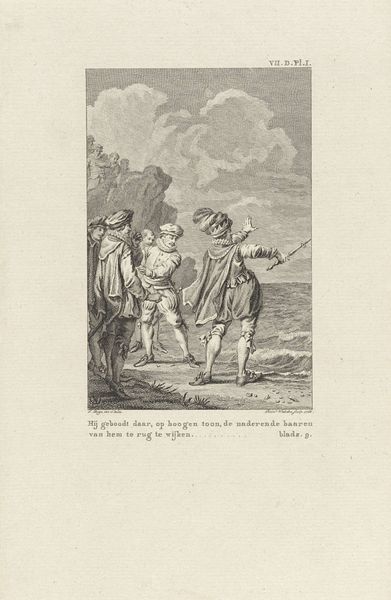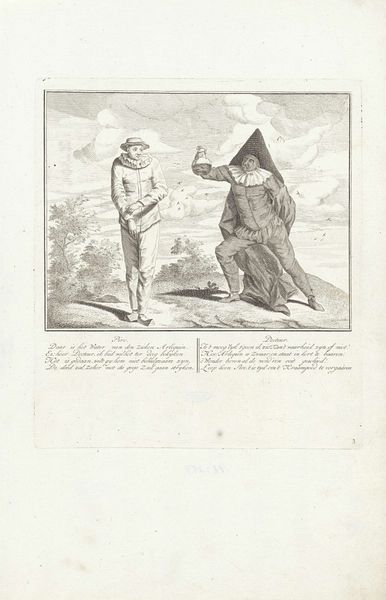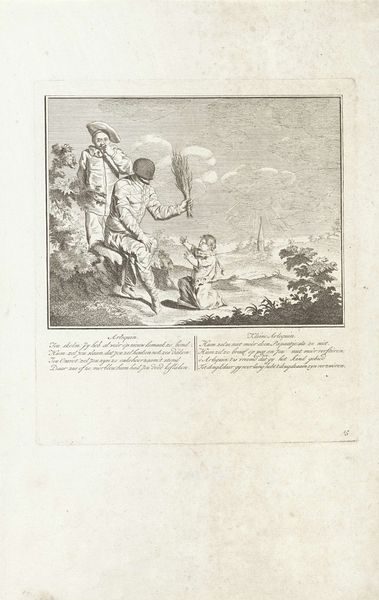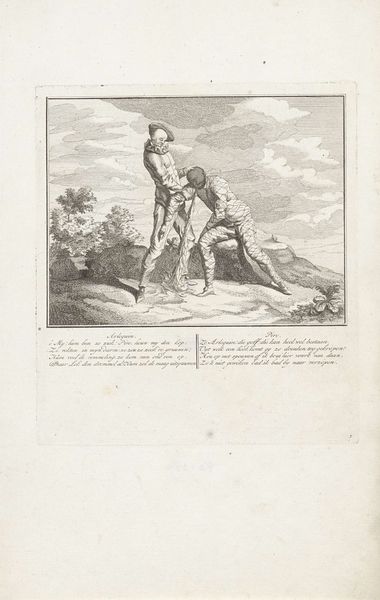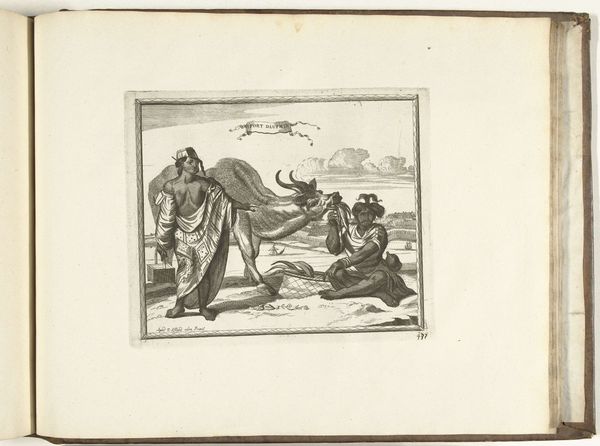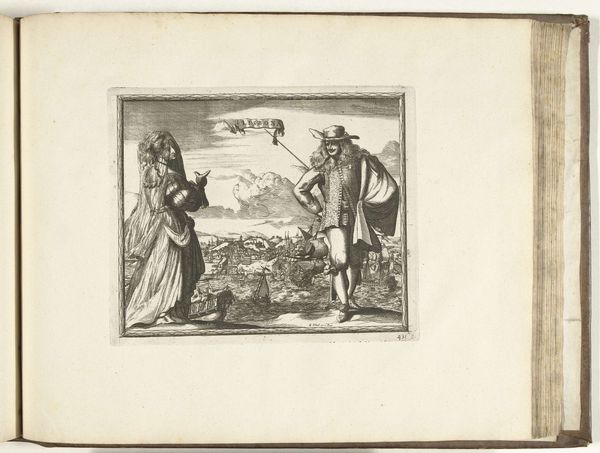
print, engraving
#
baroque
# print
#
old engraving style
#
genre-painting
#
history-painting
#
engraving
Dimensions: height 234 mm, width 208 mm
Copyright: Rijks Museum: Open Domain
Curator: The atmosphere is surprisingly light, almost comical for an engraving of this period. Is it just me, or is there something absurdly charming about this scene? Editor: Indeed. What we have here is a baroque print, "Arlequin wiegt zijn kleine Arlequin" dating roughly from 1720 to 1728. While attributed to an anonymous artist, its charm is evident—but its commentary, perhaps, requires deeper understanding. Curator: An "Arlequin" pushing a tiny "Arlequin" in a baby carriage… it does evoke some profound interpretation? At first glance, this feels more like commedia dell'arte meets mundane family life. Editor: The commedia dell'arte context is vital here. Harlequin, traditionally a mischievous, often impoverished figure, becomes a parent. We might reflect on class and the assumed roles within 18th-century European society, a society rife with disparities and structured around hierarchical social roles. Curator: The figure washing clothes, is that supposed to be his wife? The dynamic itself… quite strange. There is a very satirical bent. What does this say about gender roles? Is Harlequin taking his turn in the domestic space or evading it? The drama is rather overt; the engraving style makes everything stark. Editor: The very visible labor of one figure, in juxtaposition to the almost lackadaisical paternal role assumed by Harlequin, underscores inequalities prevalent in the Baroque era and beyond. We must remember that visual representation—even seemingly benign—reflected, and reinforced, existing structures of power. Harlequin might also represent the nobility shirking duty. Curator: Now you mention that element of power at play here, that reframes my understanding, bringing into question who gets to take leisure, and what labour really means… Editor: Precisely. We witness how domesticity itself becomes a stage, reflecting societal expectations while subtly critiquing them. The visual space encapsulates those ongoing conflicts. Curator: Considering this engraving now, a fresh awareness shines, enriching the experience! Editor: Art gives us that reflective vantage, yes.
Comments
No comments
Be the first to comment and join the conversation on the ultimate creative platform.
